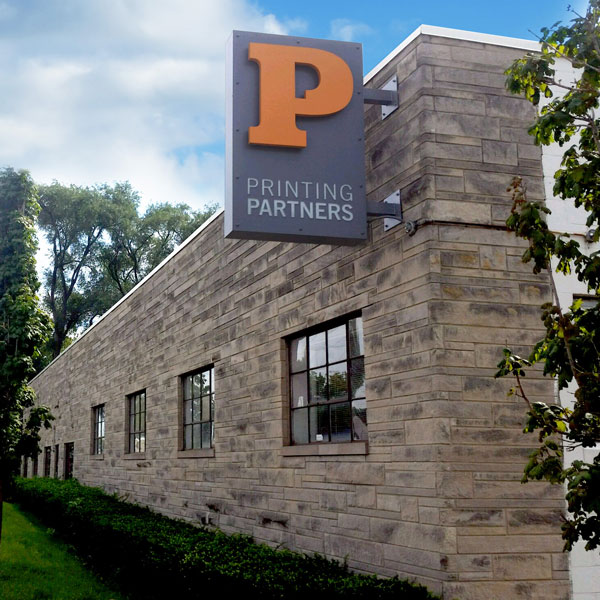Binding Types for Printed Items and Books
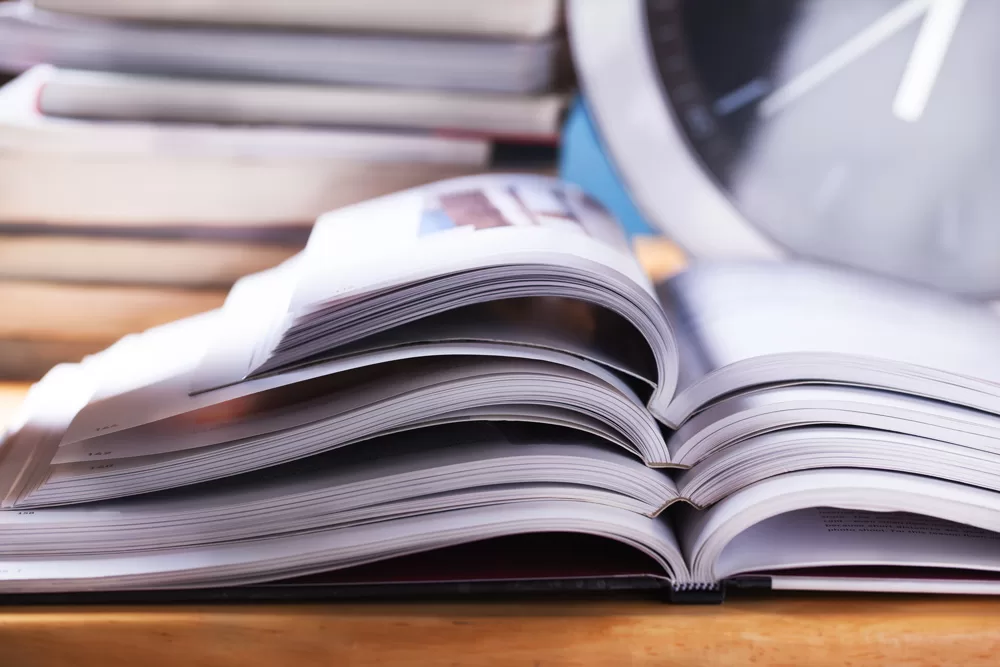
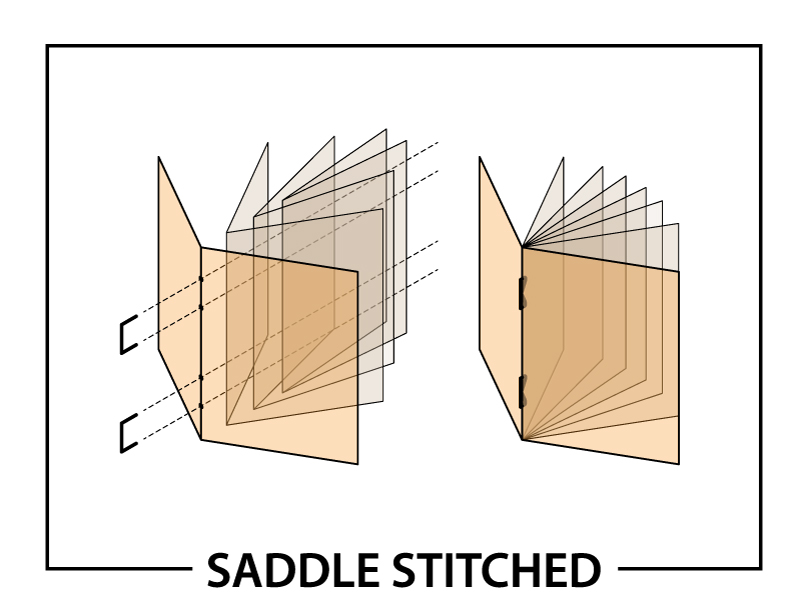
Saddle Stitch Binding
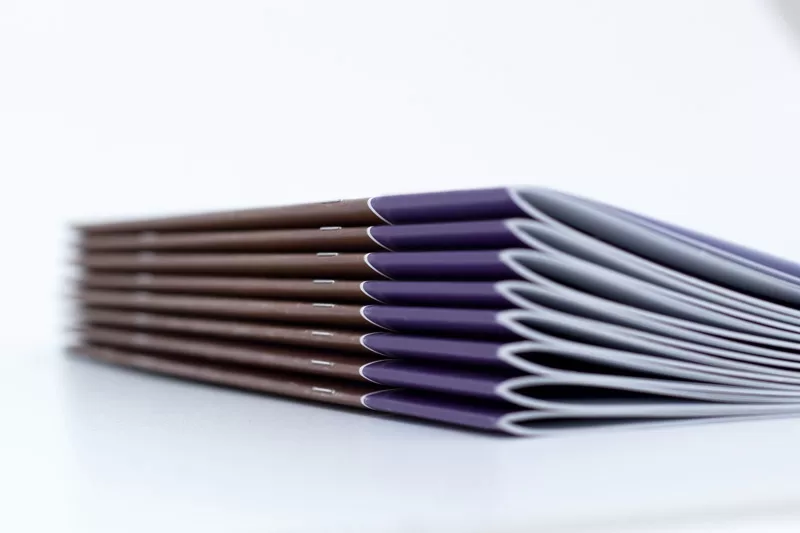
Advantages of Saddle Stitch Binding:
- Cost-Effective: It is one of the most economical binding options available.
- Quick Production: Saddle stitch binding can be produced quickly, ideal for tight deadlines.
- Lays Flat: Perfect for reading ease and display purposes.
Disadvantages of Saddle Stitch Binding:
- Page Limitation: Not suitable for very thick publications.
- Page Count Specificity: Total page count must be divisible by four, which might require adding blank pages.
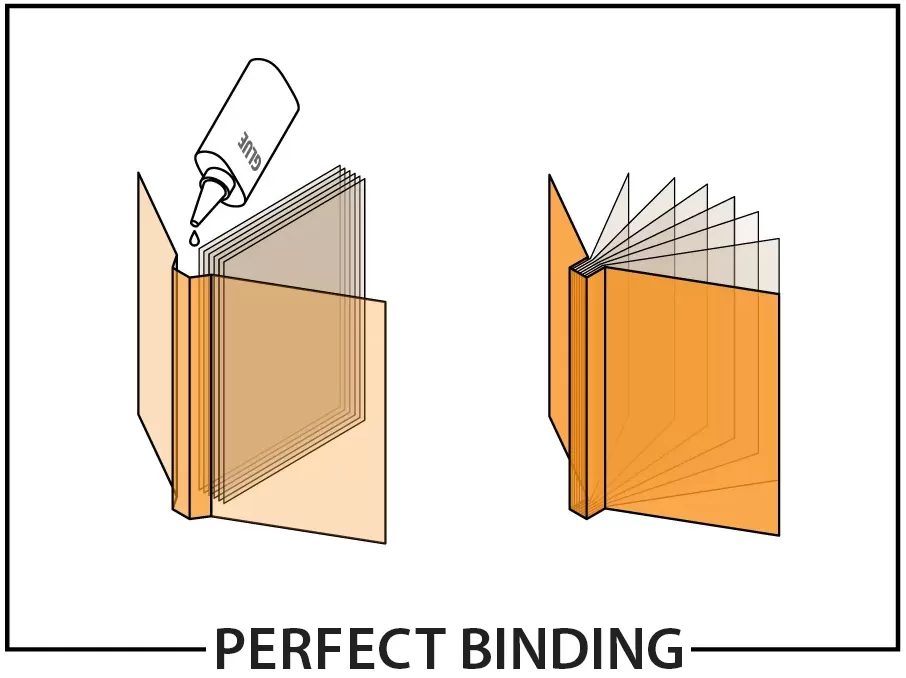
Perfect Binding
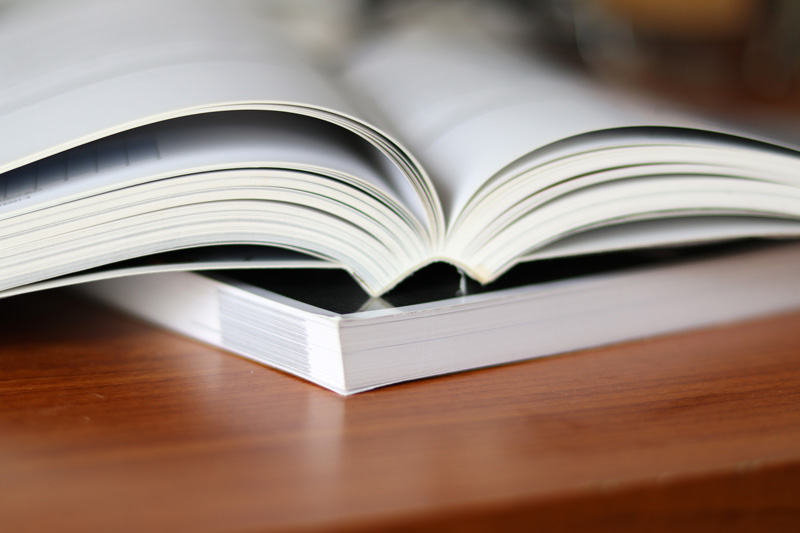
Advantages of Perfect Binding
- Professional Appearance: Provides a smooth spine that can feature printed text.
- Cost-Effective: A good value for various page counts, especially for higher volume books.
- Versatile: Suitable for different types of books, from manuals to coffee table books.
Disadvantages of Perfect Binding:
- Does Not Lay Flat: This may cause spine wear if forced open flat.
- Graphics and Design Considerations: Requires careful planning for graphics that span across two pages.
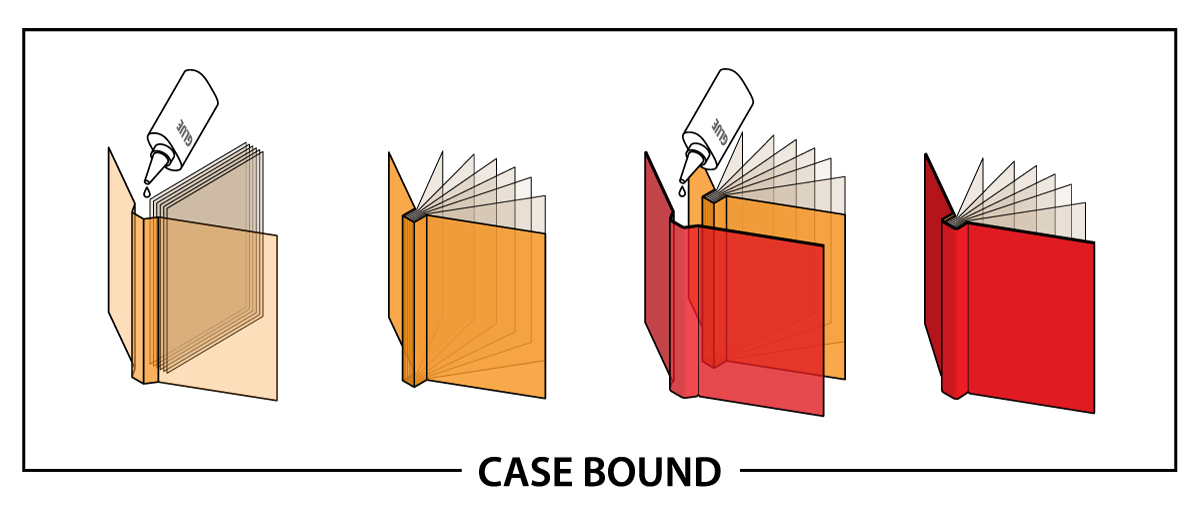
Case or Edition Binding (Hardcover)
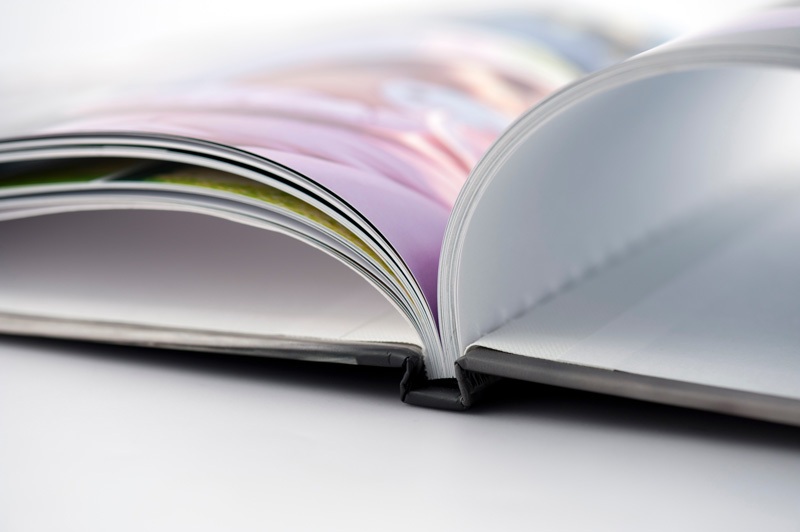
Advantages of Case Binding:
- Durability and Longevity: Ideal for frequent use and preservation.
- Customizable: Offers numerous options for personalization and premium presentation.
Disadvantages of Case Binding:
- Higher Cost: Reflects the premium materials and labor involved.
- Increased Weight: Considerations for shipping and handling due to heavier construction.
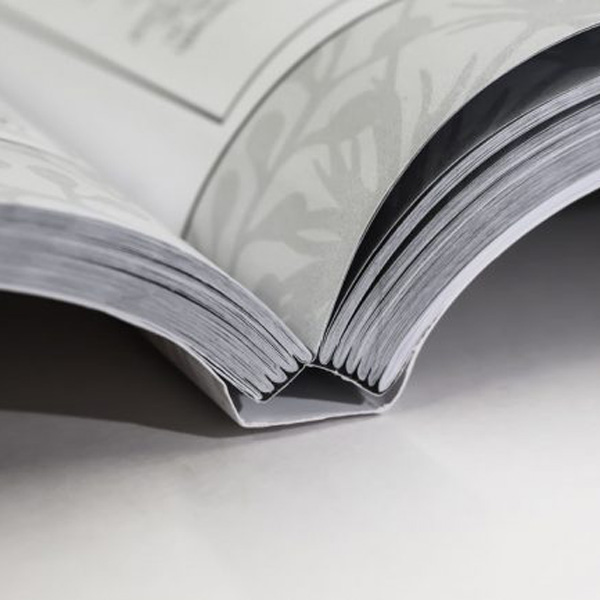
Otabind (Layflat Binding)
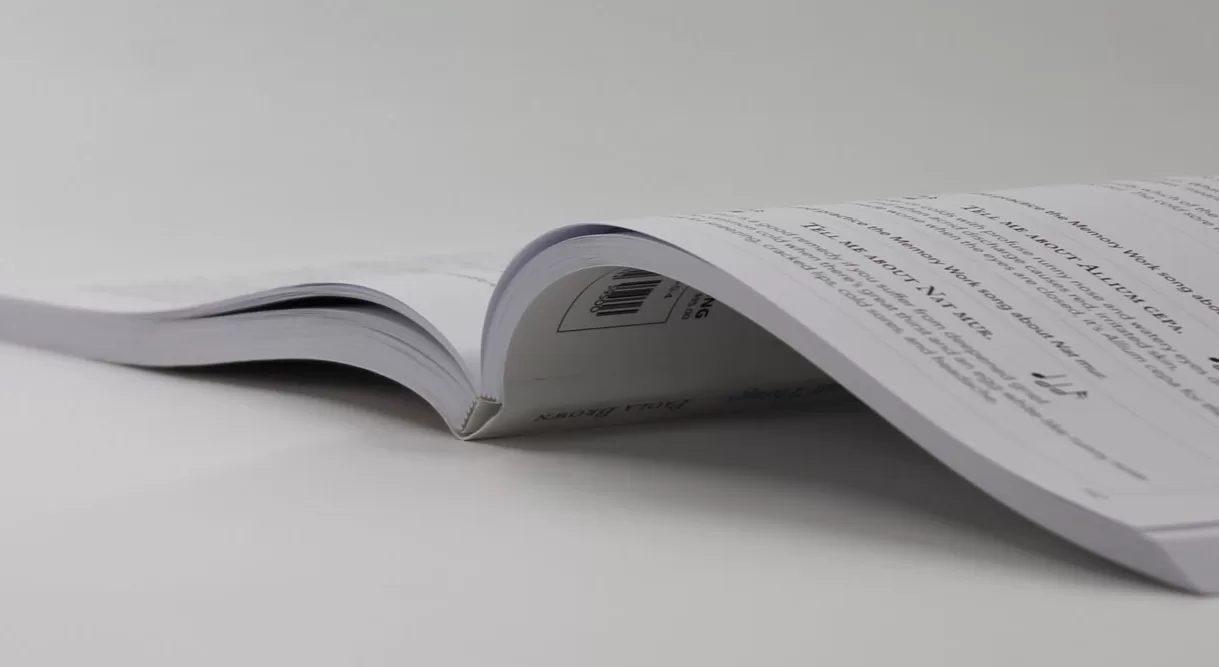
Advantages of Otabind:
- Enhanced Usability: Books open flat without damaging the spine.
- Aesthetic Appeal: Offers a distinctive, high-quality appearance.
Disadvantages of Otabind:
- Higher Cost and Production Time: Due to the complex nature of the binding process.
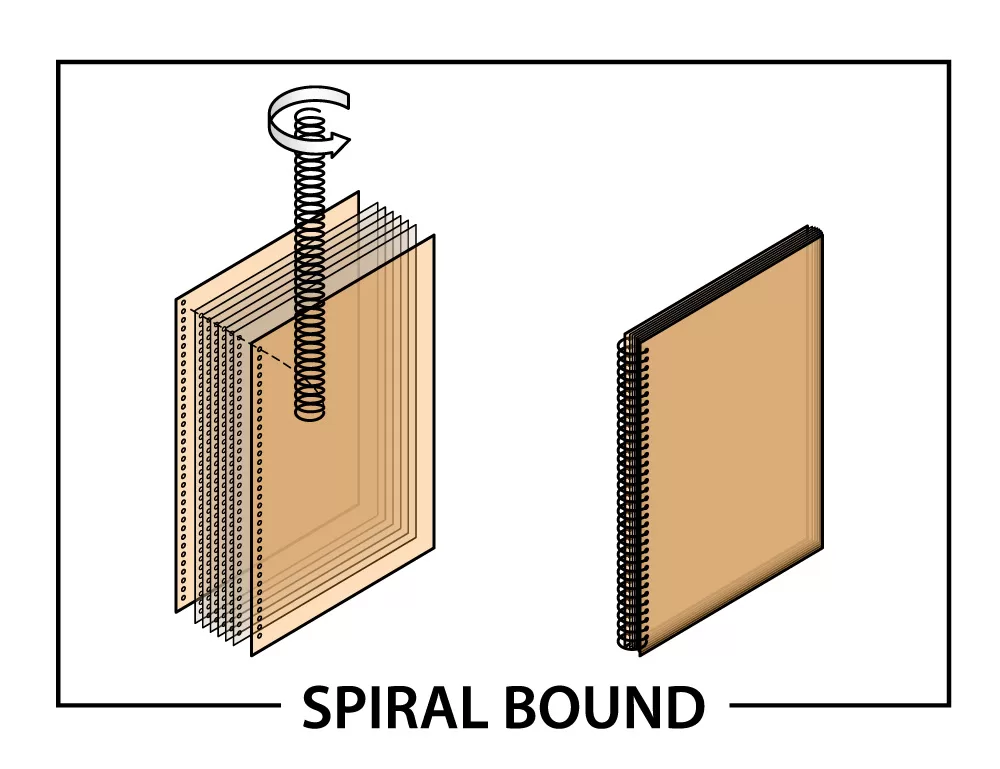
Spiral Binding or Wire-O Binding
Spiral binding, including plastic coil and Wire-O, offers a flexible and durable solution for binding workbooks, manuals, and reports. This method involves punching holes along the edge of the pages and threading a coil through them, which allows the book to lay flat or fold back onto itself.
Spiral Binding Options
At Printing Partners, we offer a variety of spiral binding options to suit your needs. Choose from plastic coil binding, which is flexible and durable, perfect for manuals and cookbooks. Wire binding provides a professional and secure finish, ideal for presentations and reports. Our double wire (wire-o) binding offers a sleek and strong solution, great for high-end documents like notebooks and planners. Each option ensures your book lays flat when open and is built to last. Contact us today to find the perfect spiral binding option for your project.
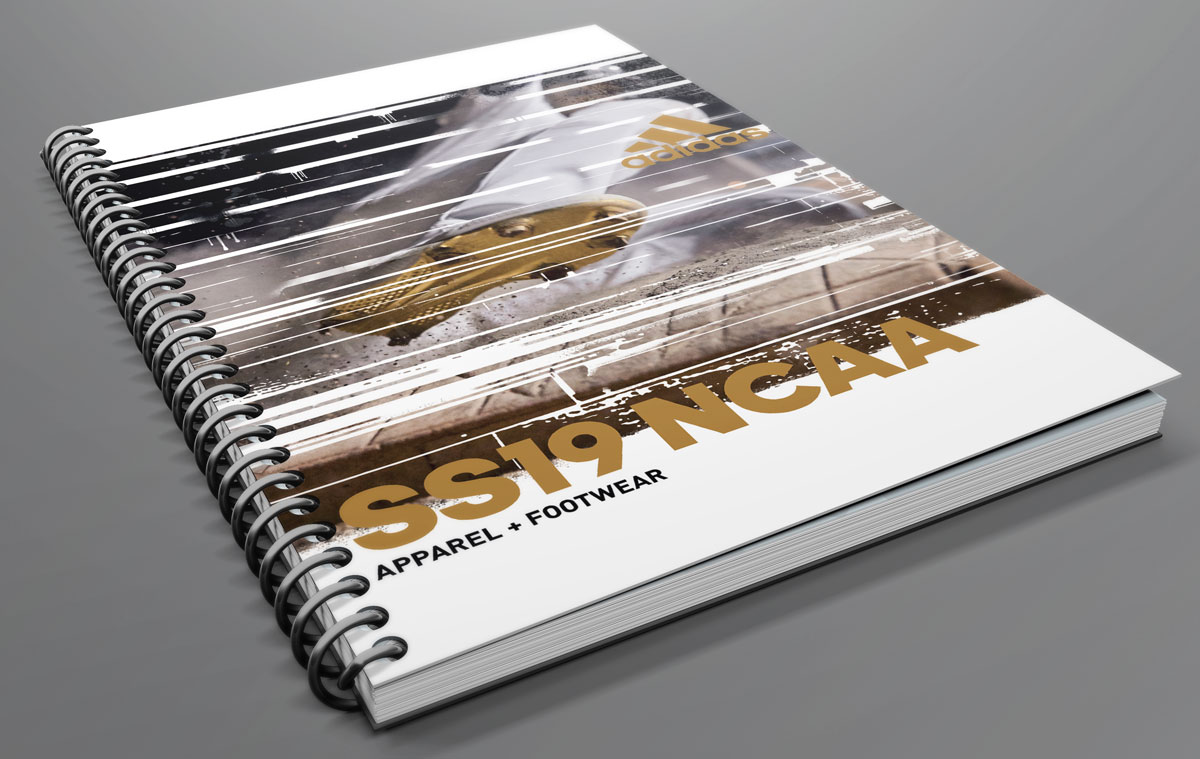
Advantages of Spiral Binding:
- Flexibility and Customization: Available in various colors and materials.
- User-Friendly: Books can lay flat and fold over, making them easy to use.
Disadvantages of Spiral Binding:
- Perceived Informality: May not be suitable for all types of professional distribution.
- Durability Concerns: Not as rigid as other types of binding, which might affect perception of quality.
Our Binding Equipment
Hunkeler Tipping Machine
Ventura Sewing Machine
Bolero Binder
Diamant Case-in Line Machine
